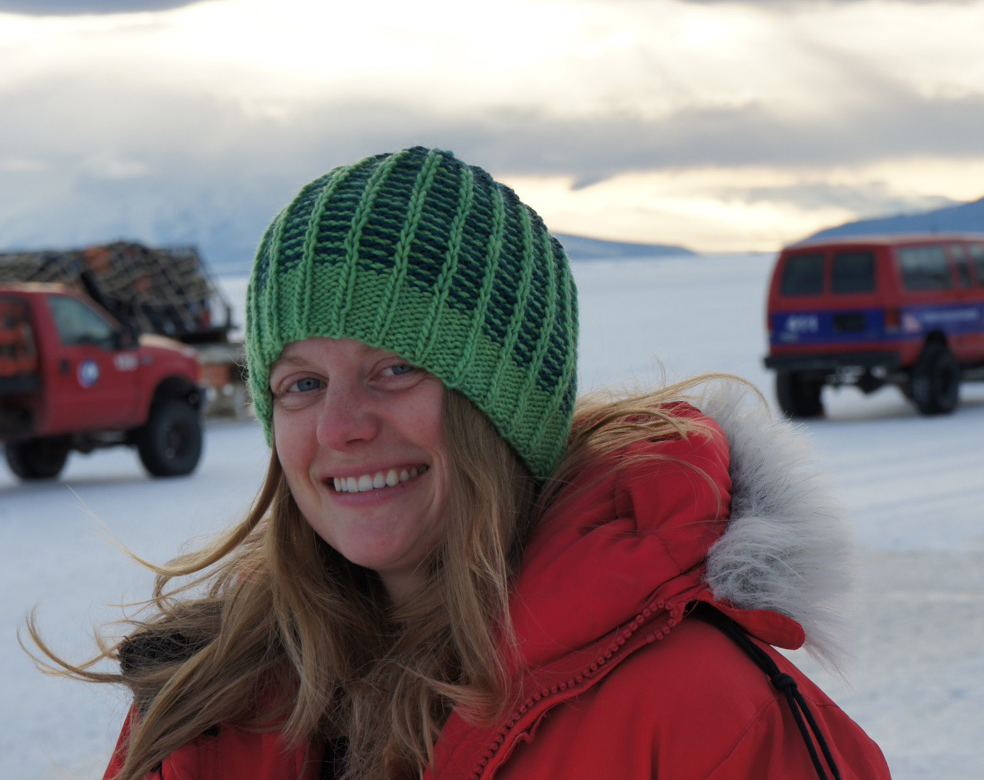Greenland snowfall
Climate change is changing the stability of the Greenland Ice Sheet, resulting in more periods of rapid melting compared to the annual snowfall it receives. This shift is concerning to researchers because the freshwater stored in the GrIS, if it were to melt, would raise sea levels by 7.4 meters (24 feet).
Researchers at the University of Wisconsin–Madison Department of Atmospheric and Oceanic Sciences and the Space Science and Engineering Center are studying these changing ice and snow dynamics by identifying different types of snowfall occurring over the GrIS and measuring how frequently each occur. The results of their study were published in the December 2020 issue of Cryosphere.

“We need to know where the snowfall is coming from,” says Elin McIlhattan, a post-doctoral researcher with UW-Madison AOS. “It’s not enough to know when it’s snowing, it’s important to understand the large-scale drivers that are producing the snow. Our next step will be to combine the observations we present in this study with climate models to see how Greenland snowfall could change in the future.”
Snow accumulation stabilizes the ice sheet in two ways. It adds mass to the glacier while also increasing its albedo (a measure of how efficiently it reflects solar energy) which reduces melting. By reflecting more energy (heat) and covering exposed parts of the land, the ice sheet is better insulated and allows for accumulation throughout the annual cycle. However, not all snowfall originates from the same kind of clouds or atmospheric conditions. Knowing the frequency of different snowfall conditions is important to understanding the climate’s impact on the ice sheet.
Using data from polar-orbiting satellites, in addition to ground-based measurements, McIlhattan assessed the frequency of two distinct snowfall types, one associated with ice-phase cloud processes (IC) and the other, with processes involving clouds containing super-cooled liquid water (CLW). While both result in snowfall, each requires different atmospheric conditions to thrive.
Overall, IC snowfall occurs more frequently than its counterpart, producing 80 percent of the ice sheet’s total accumulation. IC processes are driven by cyclones – rotating, low-pressure weather systems that produce snow as they interact with Greenland’s topography.
GREENLAND ICE SHEET RESEARCH
The country of Greenland is home to the world’s second largest ice sheet. Combined with the largest in Antarctica, they make up 99 percent of the world’s freshwater ice. The Greenland Ice Sheet blankets nearly the entire country and occupies 1.7 million square kilometers (656,000 square miles).
Due to its remote location and sparse population, gathering research data requires an international collaboration. A research outpost known as Summit Station sits near the center of the country at an elevation of 3,200 meters (10,530 feet). It is equipped with a suite of instruments used to continuously monitor atmospheric conditions and serves as a base of operations for researchers collecting ground-based data.
Photo: Summit Station’s “Big House”. Credit: Claire Pettersen
According to McIlhattan, scientists have historically assumed IC snow to be primarily responsible for snowfall over Greenland, but to what extent had not previously been examined.
In contrast, CLW snow occurs under much quieter scenarios, characterized by anomalously high-pressure with calmer conditions that result in less intense snowfall.
“Climate models predict climate change will alter the paths of Atlantic cyclones, which could have large impacts on future snowfall accumulation over Greenland,” says McIlhattan.
The study builds on previous research led by SSEC’s Claire Pettersen and ground-based data collected from Integrated Characterization of Energy, Clouds, Atmospheric state, and Precipitation at Summit (ICECAPS) – a research outpost equipped with a suite of atmospheric instruments to continuously monitor conditions over Summit Station, Greenland. These ground-based data were used to corroborate what was seen from space by NASA’s CloudSat and CALIPSO satellites when their orbit passed close to Summit Station.
The similar results seen from the ground and from space at Summit station allows for the use of satellite observations in remote regions of Greenland that do not have ground-based instrumentation. According to McIlhattan, all three data sources were required to build a complete picture of Greenland’s snowfall conditions, spanning the boundary layer to the upper atmosphere.
“We care about the fate of the Greenland Ice Sheet,” says McIlhattan. “Understanding the current state of snowfall over the ice sheet and how it may evolve in the future is a crucial component to understanding how Earth’s climate is changing.”
